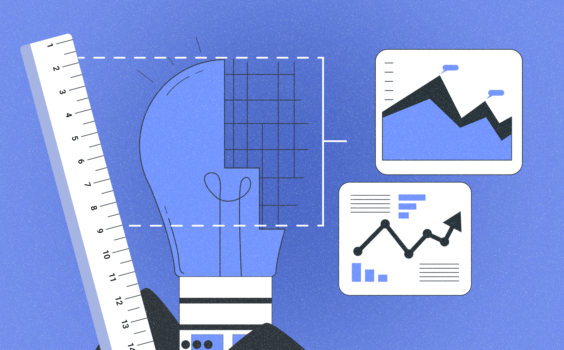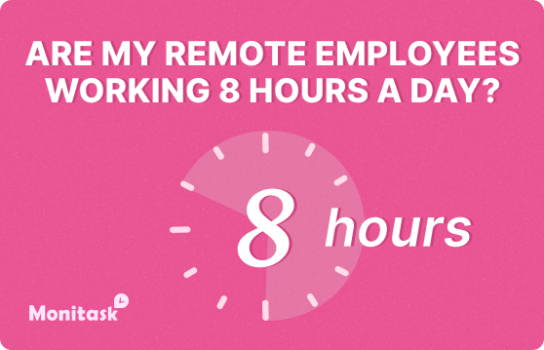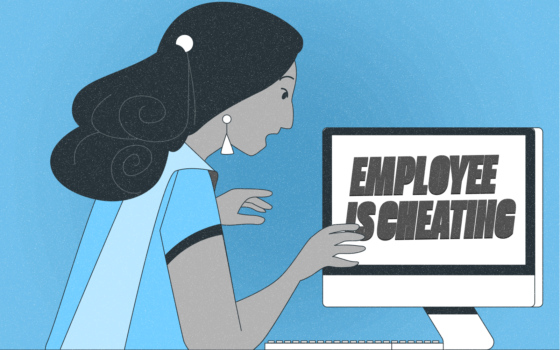How Pro-activity Can Revolutionize Your Business: A Comprehensive Guide


In the ever-evolving business world, reacting to changes is not enough; you must stay ahead of the game.
That’s where proactivity comes in—being proactive means anticipating potential problems, identifying opportunities, and taking steps to address them before they become major issues.
In this article, we’ll explore the benefits of proactivity in business and provide practical tips on how you can implement a proactive approach to ensure the success of your business.
Why Proactivity is Key to Business Success?
Proactivity is not just a buzzword; it’s a vital ingredient for any successful business. Some of the benefits of being proactive in your business approach:
Stay Ahead of the Competition
By being proactive, you can identify potential threats and opportunities before your competitors. Proactive enables you to take action before the competition and gain a competitive edge.
Increase Productivity
Proactive businesses are more productive. By identifying potential roadblocks and taking steps to remove them, you can streamline your business processes and improve efficiency.
Better Decision-Making
Proactive businesses make informed decisions based on data and research rather than reacting to circumstances as they arise. Proactive business leads to better decision-making and reduces the risk of costly mistakes.
Build Stronger Relationships
Proactive businesses are better at identifying and addressing customer needs. You can build strong, long-lasting relationships with your customers by anticipating their needs and offering solutions before they ask.
Foster a Culture of Innovation
Proactive businesses encourage innovation and creativity. By anticipating and addressing potential issues, you create an environment that values new ideas and encourages experimentation.
How to Implement Proactivity in Your Business
“Tomorrow belongs to those who prepare for it today. Proactivity is acting in anticipation of future problems, needs or changes.” Bichoy Gabra, R.Ph,Ph.D.
Now that we’ve established the importance of proactivity in business let’s explore some practical steps you can take to implement a proactive approach:
Conduct Regular Risk Assessments
Identify potential risks and threats to your business, and develop a plan to address them proactively. Risk assessments could include contingency plans for major events such as incidents, natural disasters, or economic downturns.
Use Data and Analytics
Use data and analytics to identify patterns and trends impacting your business. Data analytics can help you make informed decisions and take action before issues arise.
Keep Up with Industry Trends
Stay up-to-date with the latest trends in your industry. Constantly updating trends will enable you to identify opportunities and stay ahead of the competition.
Encourage Employee Input
Encourage your employees to provide feedback and ideas on improving business processes. Employees’ feedback can lead to innovation and creativity within your business.
Plan for the Future
Develop a long-term strategy for your business. This should include plans for growth and expansion, as well as potential risks and threats.
Four Obstacles and How to Overcome Them

Businesses need to stay ahead of the competition for success in the market. But how do you achieve this?
The answer is simple: proactivity.
Being proactive means taking action before something happens rather than waiting for it to happen and then reacting. However, there are a variety of obstacles that can stand in the way of proactivity in business. Here are four common challenges, along with tips for overcoming them.
A Reactive Mindset
The biggest obstacle to proactivity is having a reactive mindset. This is when you wait for problems or opportunities before taking action. Breaking out of this mindset is important by looking at things differently.
Ask yourself what you could do now that will help prevent issues in the future or create opportunities down the line. Once you start thinking proactively instead of reactively, you will be more likely to take advantage of potential opportunities before they pass you by.
Lack of Resources
Another obstacle to proactivity is the need for more resources. Whether it’s time, money, or personnel, sometimes there need to be more resources to make proactive changes in your business.
The key here is to prioritize and focus on what matters most to make the most out of limited resources. You may have less time or money than you would like, but if you focus on what matters most and act quickly, you can still be proactive and get results with limited resources.
Fear of Failure
Everyone fears failure when trying something new, but this fear should not stand in the way of being proactive in business. One way to reduce fear is by breaking large goals into smaller ones and focusing on each step individually rather than the entire project.
This makes it easier to focus on success rather than failure and take small steps toward achieving your goals without getting overwhelmed or discouraged by possible mistakes.
Lack of Knowledge
Another obstacle facing those looking to be more proactive in their business is a need for more knowledge. People often need help knowing where to start or how best to make positive changes.
The key here is education — reading books, attending seminars, networking with others who have gone through similar experiences, and seeking expert advice. All these things can help provide knowledge and insight into how best to move forward with being more proactive.
Make Proactive Behavior as Your Business’s Superpower

Proactive behavior is a key factor for businesses of any size. It helps an organization:
- Identify potential problems
- Recognize opportunities
- Navigate obstacles.
It’s a way to stay ahead of the competition. You can use five key strategies to make proactivity your business’s superpower.
Get more out of your business
Get the best employee engagement content every week via mailing list
Conduct Regular Risk Assessments One way to implement proactive behavior in your business is by conducting regular risk assessments. This involves taking a step back to evaluate what could go wrong in your current operations and anticipate potential risks that may arise in the future.
This can help you identify areas where you need improvement and take steps to mitigate any risks that could negatively impact your business’s performance or reputation.
- Use Data and Analytics
Another way to practice proactive behavior is by leveraging data and analytics. Utilizing big data can help you gain deeper insights into customer behavior, market trends, and industry changes so that you can anticipate future opportunities or threats before they happen.
Through data-driven decisions, you can stay one step ahead of the competition and make sure your business remains relevant and competitive in today’s fast-paced environment.
- Keep Up with Industry Trends
Staying on top of industry trends is essential if you want to practice proactive behavior in your business. Staying informed about what’s happening in your sector will help you understand how certain developments might affect your operations or customer base. The information allows you to make proactive decisions that will benefit both short-term goals and long-term objectives.
Additionally, staying up-to-date on industry trends will help you better understand the challenges faced by competitors, which may give insight into how they are responding to these challenges—and even how they are succeeding!
- Encourage Employee Input
The important thing you can do as a manager or business owner is empower your employees to think proactively. Give them the freedom to think outside the box and provide an environment where they feel comfortable sharing their ideas, even if those ideas challenge the status quo.
This will help create an atmosphere of collaboration and innovation, leading to better decisions and more successful long-term strategies for your business.
- Plan for the Future
Another way to implement proactive behavior in your business is by planning for the future. Consider factors such as potential new markets or changes in customer preferences when creating strategies or making decisions about products or services.
You should also consider potential risks and rewards associated with any strategy so that you can be prepared for all eventualities. Doing this will help ensure that your business remains competitive and relevant in the ever-changing world of commerce.
Proactive Behaviors in Business

Being proactive is a key component of any successful business. The term “proactive” describes behaviors that involve taking the initiative and planning. Proactive means being assertive, anticipating customers’ needs, and responding quickly with creative solutions.
Proactive Customer Service
In today’s world, businesses need to provide excellent customer service. Customers expect quick responses and easy access to information about products or services they are interested in. To meet these expectations, businesses should be proactive regarding customer service.
This can involve providing customers with helpful resources on the website, such as FAQs or tutorials for using products or services. Additionally, proactively reaching out to customers with helpful tips or reminders via email can help build loyalty and trust in your brand.
Proactive Marketing
When marketing your business, you need to think proactively instead of just reacting to trends already established in the industry.
Identifying potential opportunities before they arise and creating an effective plan that takes advantage of them can give your business a leg up over competitors who wait until it is too late.
Additionally, staying ahead of trends by leveraging new technologies like artificial intelligence (AI) can help you keep your edge in the market for much longer than possible if you only rely on traditional methods.
Proactive Sales
A proactive sales strategy means you are not waiting for clients to come to you; instead, you are actively looking for ways to engage with potential buyers and close deals quickly and efficiently.
This could include:
- Analyzing market data regularly to identify untapped markets where there may be more demand than supply
- Proactively reaching out to prospects through cold emails or calls.
- Offering discounts or special promotional prices
- Utilizing social media platforms like LinkedIn
- Developing relationships with influencers who can amplify your message and get more eyes on your offerings.
Proactive Product Development
Product development is an essential part of staying competitive as a business. Proactively identifying emerging trends and responding quickly with innovative products that meet those needs can help ensure your offerings remain relevant in the marketplace for years.
Additionally, gathering feedback from customers regularly can help inform product updates. So that existing product offerings are constantly improving to remain competitive against similar products from other companies within the same industry.
How to Develop a Proactive Employee Mindset
Employees can use organizational behavior practices to shift from passive to proactive. This shift involves taking personal initiative in problem-solving, going beyond simply responding to tasks put forth by supervisors, and looking instead for opportunities to advance organizational objectives.
A proactive employee will anticipate potential challenges and work with colleagues to develop solutions they can initiate. It requires an individual to think critically, exercise discretion in making decisions, and take responsibility for their actions.
A proactive mindset will lead to tangible organizational benefits such as increased productivity and improved customer relations when properly executed.
How to Allocate a Proactive Person

Allocating proactive people to different tasks is essential for any organization. A proactive person is an individual who takes the initiative and efficiently works towards proactive behaviour in the workplace.
Proactive individuals make decisions independently and execute tasks quickly, resulting in better outcomes. Proactive behaviour increases productivity, efficiency, completed tasks, and overall progress.
For this reason, it is critical to allocate proactive people to different projects at all times. Additionally, proactive people can create a positive team dynamic within the organization, as they often motivate and inspire others through their work attitude.
However, keeping proactive behaviour balanced is essential – more proactive energy in one area can result in burned-out or overwhelmed employees who may need help with job performance.
Proactivity in Business: A Case Study
It’s no secret that the business world constantly evolves. Companies have to stay on top of trends, adapt their strategies, and be proactive to stay competitive. What exactly does it mean to be proactive? To answer this question, let’s look at an example of a company that has adopted a proactive mindset and achieved tremendous success.
Case Study Example: Microsoft Corporation
Microsoft began by creating the original Windows operating system and then developed the Microsoft Office Suite, revolutionizing how people worked with computers.
The company also expanded into gaming, cloud services, and mobile devices. By investing heavily in research and development (R&D) and being open to new opportunities, Microsoft was able to remain relevant and successful even amidst rapidly changing technologies.
Key Takeaways
The success story of Microsoft can provide some key takeaways for businesses that want to embrace proactivity.
- Businesses need to plan to prepare for whatever comes their way.
- Investing in R&D is essential; companies risk becoming obsolete before they know it without staying current with the latest technologies.
- Don’t be afraid of taking risks; sometimes, you need to go outside your comfort zone if you want your business to grow and reach its full potential.
Conclusion
Proactivity is essential to the success and growth of any business. By anticipating potential issues, identifying opportunities, and taking action before they become major problems, you can stay ahead of the competition, improve productivity, and make better decisions.
Proactive behavior refers to taking initiative without being asked. Employees respond promptly to tasks by supervisors and colleagues, anticipating potential challenges and looking for ways to further organizational objectives.
It requires critical thinking skills, wise decision-making, and responsibility for one’s actions. Allocating proactive people to different tasks is paramount in any organization. It can help:
- Increase productivity and efficiency.
- Create a positive team dynamic.
- Motivate and inspire others.
- Stay ahead of the competition.
To successfully implement proactive behavior in the workplace, companies must invest in research and development to keep up with changing technologies. It’s also important to take risks outside one’s comfort zone for the company to grow and reach its full potential.
By implementing a proactive approach, you can create an organizational behavior of innovation and build strong, long-lasting relationships with your customers. So, take the time to assess your business processes and develop a proactive strategy to help you achieve your goals.


